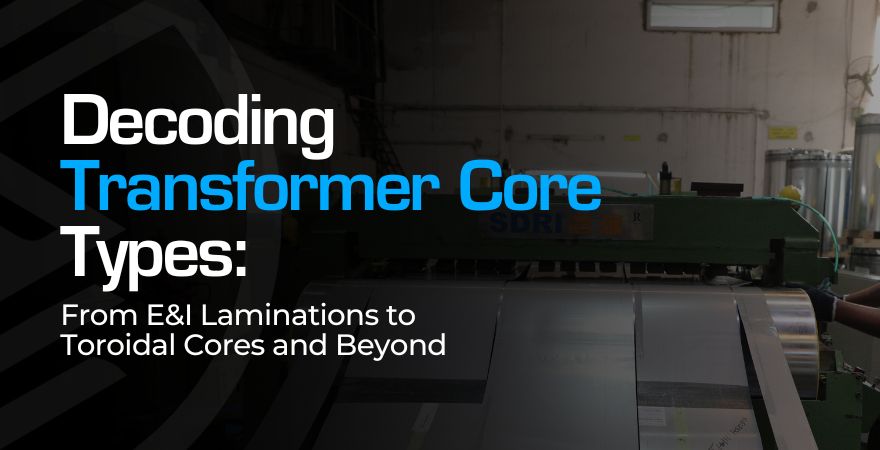Every transformer starts with one critical decision the type of core it will use. Core geometry and lamination style influence everything: efficiency, weight, cost, size, and even the hum you hear when the transformer runs.
Instead of looking at cores in isolation, let’s break down how different designs E&I, Toroidal, Mitred, Rectangular and Advanced Variants compare in real-world performance.
Types of Transformer Core Explained
1. E&I Laminations: The Workhorse Design
Structure: Alternating E-shaped and I-shaped laminations.
Strengths: Simple construction, economical, flexible for low to medium ratings.
Challenges: More joints = higher leakage flux and losses.
Best Fit: Distribution transformers and general industrial applications.
2. Toroidal Cores: Compact Efficiency
Structure: A closed-loop ring of wound CRGO strip.
Strengths:
No cut corners → minimal flux leakage.
Lower audible noise due to reduced magnetostriction.
High efficiency in small form factor.
Challenges: Expensive tooling and more complex winding process.
Best Fit: Sensitive electronics, medical devices, high-performance power supplies.
3. Mitred Laminations: Precision for Power Transformers
Structure: 45° mitred joints at the corners of laminations.
Strengths:
Significantly reduces core losses.
Minimizes transformer hum by smooth flux path.
Challenges: Requires CNC precision cutting for repeatability.
Best Fit: Medium to large power transformers where efficiency is paramount.
4. Rectangular Laminations: Simplicity with Limits
Structure: Straight-cut laminations without mitred joints.
Strengths: Quick to manufacture, cost-effective.
Challenges: Higher stray flux and increased noise.
Best Fit: Low-demand transformers where efficiency is not critical.
5. Beyond Conventional: Core Frame Assemblies & Hybrid Designs
Modern transformers go beyond the types of transformer core lamination . Core frame assemblies ensure mechanical stability and low vibration, while hybrid geometries (such as step-lap designs) further reduce noise and improve magnetic efficiency.
Conclusion
Choosing a types of transformer core is about trade-offs cost vs. performance, size vs. efficiency.
E&I = affordability
Toroidal = compact and quiet
Mitred = high efficiency for power grids
Rectangular = basic and budget-friendly
At Sarjani Coretech, we don’t just cut steel, we cut losses. With CNC precision and decades of experience, we supply laminations and assemblies for every core type, ensuring performance you can measure and reliability you can trust.

